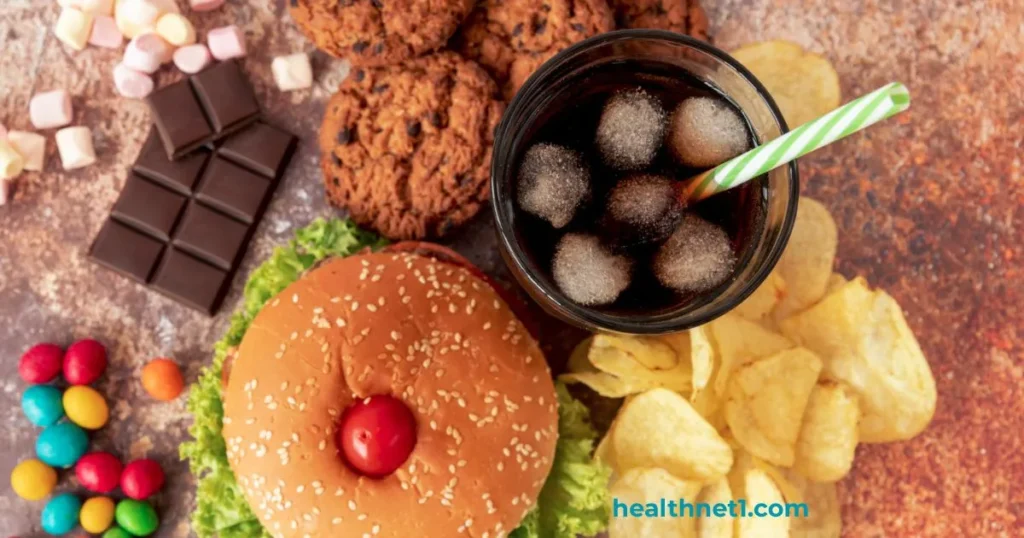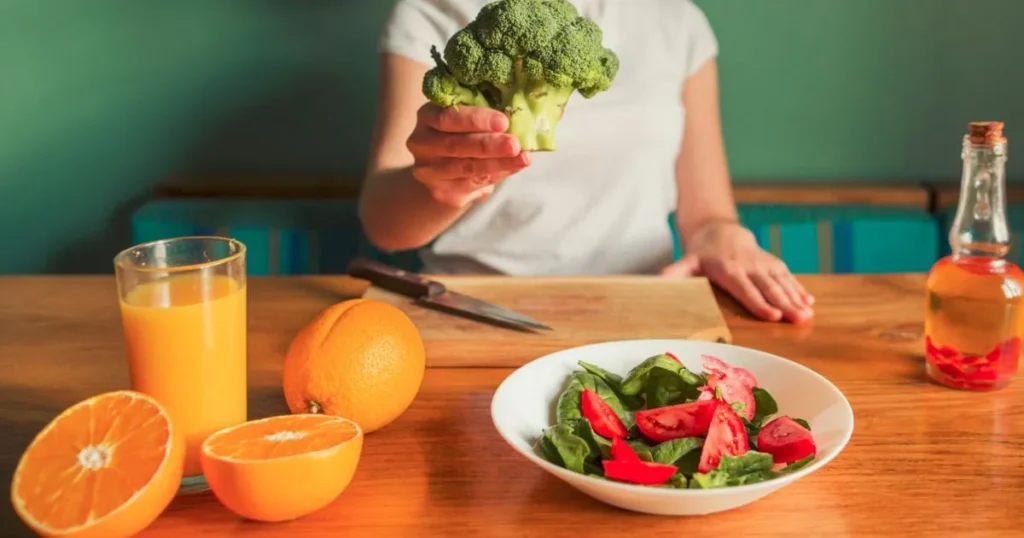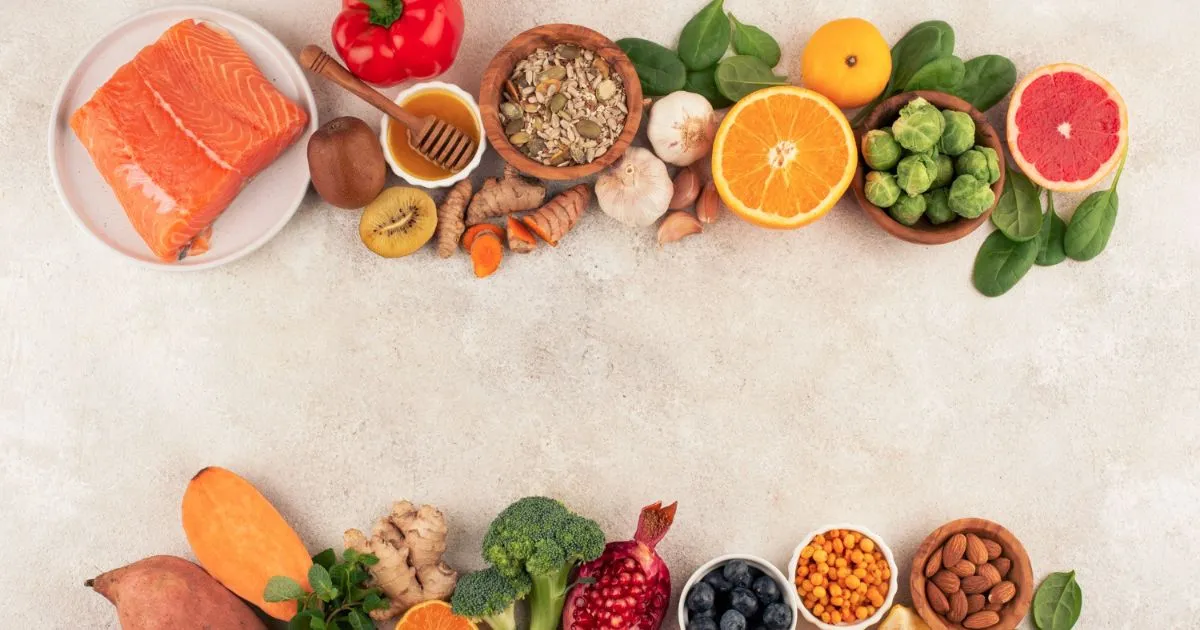A Fresh Start for Your Body
You’ve probably had mornings where your body feels heavy, your joints ache, or your energy just isn’t there. That sluggish feeling often isn’t about getting older — it’s about inflammation. And the good news? You can calm that internal fire simply by changing what’s on your plate.
The anti inflammatory diet isn’t a restrictive trend — it’s a long-term way of eating that helps your body heal from within. By choosing foods that support your immune system and avoiding those that fuel inflammation, you can feel lighter, more energetic, and more in control of your health.
Let’s explore exactly what this diet means, the best anti-inflammatory diet foods to include, and what to skip if you want your body to function at its best.
Table of Contents
What Is Inflammation — and Why It Matters
Inflammation isn’t always a bad thing. When you get a cut or catch a cold, your immune system triggers inflammation to protect and repair tissues. That’s acute inflammation, and it’s temporary.
But when inflammation lingers for weeks, months, or even years, it becomes chronic inflammation — the silent root of many health problems, including heart disease, diabetes, arthritis, and even fatigue.
According to Harvard Health, chronic inflammation is often linked to lifestyle factors such as diet, stress, and lack of sleep. And food plays a major role in either fueling or fighting this process.
Simply put, what you eat can turn inflammation on or off.
How Your Diet Affects Inflammation
Your food choices have a direct impact on the chemical signals your body sends out.
Certain foods — like refined sugar, processed meats, and trans fats — trigger inflammatory molecules called cytokines. On the other hand, antioxidant-rich foods such as fruits, vegetables, and omega-3 fats lower those inflammatory responses and help protect your cells.
According to the Cleveland Clinic, consistently choosing anti-inflammatory diet foods can help reduce your risk of chronic conditions while improving energy, focus, and even mood.
Foods That Fight Inflammation (Eat More Often)
When it comes to building your anti inflammatory diet, focus on foods that are rich in antioxidants, omega-3 fatty acids, and fiber. These nutrients help calm inflammation, support digestion, and strengthen your immune system.
Here are the top anti-inflammatory diet foods to include daily:
1. Colorful Fruits and Vegetables
You’ve heard it before — eat the rainbow. Every color represents a unique set of phytonutrients that your body needs to reduce inflammation.
Top picks:
- Berries (blueberries, raspberries, strawberries)
- Leafy greens (spinach, kale, arugula)
- Broccoli, Brussels sprouts, and cauliflower
- Citrus fruits (oranges, lemons, grapefruits)
- Tomatoes and red bell peppers
These foods are rich in antioxidants like vitamin C, beta-carotene, and polyphenols — compounds shown to reduce oxidative stress.
Pro tip: Try filling half your plate with fruits and vegetables at every meal to keep inflammation in check.
2. Healthy Fats (Omega-3 Powerhouses)
Your body needs fat, but the right kind of fat. Omega-3 fatty acids are among the most powerful anti-inflammatory compounds found in nature.
Eat more of:
- Salmon, sardines, mackerel, and trout
- Chia seeds and flaxseeds
- Walnuts and almonds
- Extra virgin olive oil
These fats lower the production of inflammatory molecules in the body, improving heart health and brain function.
3. Whole Grains and High-Fiber Foods
Refined carbs like white bread or pasta can spike your blood sugar and trigger inflammation. Instead, focus on whole grains that digest slowly and feed your gut bacteria.
Examples:
- Oats, quinoa, brown rice, barley, and millet
- Legumes like lentils, beans, and chickpeas
These foods support a balanced gut microbiome, which in turn regulates your immune system and inflammatory response.
4. Healing Herbs and Spices
Nature provides some of the most powerful anti-inflammatory compounds in your spice rack.
Best options:
- Turmeric – contains curcumin, known to reduce joint pain and inflammation
- Ginger – helps with muscle soreness and digestion
- Garlic – supports immunity and heart health
- Cinnamon – stabilizes blood sugar levels
Add these spices daily to soups, teas, and meals for a natural inflammation shield.
Foods That Cause Inflammation (Limit or Avoid)

Not all foods are created equal — some can quietly work against you. These are the main foods that trigger chronic inflammation and are best limited or replaced.
1. Processed and Refined Foods
Fast foods, packaged snacks, and white bread are packed with additives, unhealthy fats, and refined sugars that overwork your immune system.
- Refined carbohydrates (white rice, pastries, pasta)
- Processed snacks and ready meals
- Frozen fried foods
These foods spike blood sugar and promote the release of inflammatory markers in your body.
2. Sugary Drinks and Desserts
Soft drinks, candy, and baked goods are major sources of added sugars. High sugar levels can increase oxidative stress and insulin resistance — both linked to inflammation.
According to Harvard Health, excessive sugar intake can raise the risk of developing chronic conditions like type 2 diabetes and heart disease.
If you crave sweetness, try whole fruits or a drizzle of honey instead.
3. Trans Fats and Fried Foods
Trans fats are known to increase “bad” LDL cholesterol and lower “good” HDL cholesterol, contributing to inflammation and heart disease.
They’re often found in:
- Margarine and shortening
- Fried fast food
- Packaged baked goods
The FDA has banned artificial trans fats, but it’s still important to check food labels for “partially hydrogenated oils.”
4. Red and Processed Meats
Processed meats like bacon, sausages, and hot dogs can trigger inflammation because of high levels of saturated fat and preservatives.
If you enjoy meat, choose lean cuts or plant-based proteins a few times per week.
Sample 1-Day Anti Inflammatory Meal Plan
| Meal | Menu | Why It Helps |
| Breakfast | Oatmeal with blueberries, chia seeds, and honey | Packed with antioxidants and omega-3s |
| Snack | Green tea and almonds | Reduces oxidative stress |
| Lunch | Grilled salmon with spinach and quinoa | Rich in omega-3s and fiber |
| Snack | Sliced apple with almond butter | Balances blood sugar |
| Dinner | Lentil curry with turmeric and garlic | Anti-inflammatory spices + plant protein |
Start small — even replacing one processed meal with a nutrient-rich option can make a difference in how you feel.
Lifestyle Habits That Support an Anti-Inflammatory Diet

Your food choices are the foundation, but your lifestyle also shapes your body’s inflammatory response.
1. Stay Hydrated
Drink enough water throughout the day. Dehydration can stress your organs and increase inflammation.
2. Get Restful Sleep
Sleep allows your body to repair cells and balance inflammation-related hormones like cortisol.
3. Move Your Body
Daily walks, yoga, or swimming improve circulation, balance hormones, and reduce inflammatory markers.
4. Manage Stress
Chronic stress releases cortisol, which can worsen inflammation. Try mindfulness, deep breathing, or journaling.
Scientific Evidence Behind the Anti Inflammatory Diet
Studies from Harvard Health and Cleveland Clinic highlight that this way of eating may lower C-reactive protein (CRP) — a key marker of inflammation in the blood.
A 2023 review published in PubMed Central confirmed that omega-3 fatty acids, polyphenols, and fiber-rich foods all play a crucial role in reducing inflammation, oxidative stress, and chronic disease risk.
Health Benefits You Can Expect
When you consistently follow an anti inflammatory diet, you may notice:
- Less joint pain and stiffness
- Improved energy and focus
- Balanced blood sugar levels
- Better digestion and gut health
- Lower risk of heart disease and chronic fatigue
Your body starts to thrive when you fuel it with real, whole foods — and it thanks you with vitality and balance.
FAQs About the Anti-Inflammatory Diet
What is the main goal of an anti-inflammatory diet?
The goal is to reduce chronic inflammation through nutrient-rich, whole foods that support the immune system and lower oxidative stress.
Can I follow this diet if I have high blood pressure?
Absolutely. Most anti-inflammatory foods — like leafy greens and fatty fish — naturally support heart and blood pressure health.
Is it safe for everyone?
Generally, yes. However, if you have specific health conditions or take medication, consult your doctor before making significant dietary changes.
How soon will I notice results?
Most people begin to feel improvements — like reduced bloating and better energy — within 2–3 weeks.
Is it the same as the Mediterranean diet?
They’re very similar. Both emphasize fruits, vegetables, fish, olive oil, and whole grains — all proven anti-inflammatory foods.
Conclusion: Nourish Your Body, Calm the Fire Within
You have more power over your health than you realize. Each meal is an opportunity to either fuel inflammation or fight it. By focusing on anti-inflammatory diet foods — colorful produce, whole grains, healthy fats, and healing herbs — you’re helping your body heal, one bite at a time.
If you’re ready to take the first step toward better health, start by making one simple swap today — trade something processed for something real. Your energy, mood, and long-term wellness will thank you.If you found this guide helpful, explore more science-backed natural health tips at HealthNet1.com.
Start nourishing your body with purpose — because feeling good begins with what you eat.

